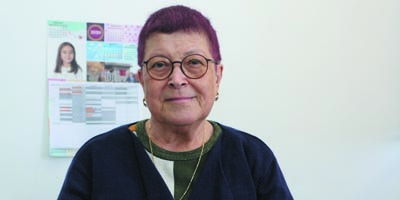EUL Academician Ataman made a statement on 21st March Down Syndrome Awareness Day

European University of Lefke (EUL) Dr. Fazıl Küçük Education Faculty Special Education Teaching Department Head Prof. Dr. Ayşegül Ataman made a statement about “March 21st, Down Syndrome Day” and gave detailed information about Down Syndrome as follows:
What is Down Syndrome?
The child’s physical appearance may be slightly different from other children, and there may be some health problems. But the point that should not be forgotten is that this child has Down Syndrome, just as some children have blond hair and some have blue eyes, it is a genetic difference.
How does Down syndrome occur?
With the union of egg and sperm cells, a cluster with 46 chromosomes emerges. Therefore, the genetic structure of the baby depends on the first cell to be formed. Chromosomes are in equilibrium in pairs, 23 pairs. For any reason, these couples having too many chromosomes will upset the balance. This condition, that is, having three chromosomes, is defined as trisomy. In the case of Down Syndrome, when the formation of three chromosomes occurs in the 21st chromosome ring of the gene chain, this formation is also called Trisomy 21. Although children with Down Syndrome have an extra 21st chromosome, all other chromosomes are normal and fulfill all their duties as they should. Therefore, the main lines of personality are determined by the other 46 chromosomes, even if some features are negatively affected by the plus proteins caused by the extra chromosome.
What is the source?
Two things are certain about Down syndrome. The source of Down syndrome is not the parents, and nothing before or during pregnancy will cause a child to have Down syndrome.
Second, like other children, children with Down syndrome have their own unique personalities, abilities, and thoughts. Like other children, they grow up to be individuals with different personalities.
Why does a child get Down Syndrome?
Although various arguments have been put forward such as the age of the mother, radiation, thyroid antibodies, drug and alcohol use among the determining factors, there is no definite result. As a result, the 21st chromosome did not divide for an unknown reason and kept its place in the new cell.
The advanced age of the mother is the only statistical data associated with the frequency of the syndrome. Recent studies show that chromosomal indivisibility may arise not only from the mother’s egg but also from the father’s sperm.
MOTHER’S AGE
| MOTHER’S AGE | RISK OF DOWN SYNDROME |
| Under the age of 20 | One in 1700 birth |
| Aged between 20-25 | One in 1350 birth |
| Aged between 25-30 | One in 1150 birth |
| Aged between 30-35 | One in 700 birth |
| Aged between 35-40 | One in 250 birth |
| Aged between 40-45 | One in 70 birth |
| Over the age of 45 | One in 16 birth |
What is the risk of recurrence with Down Syndrome?
It depends on the type of chromosome change in the child. The risk of recurrence after the child is born is less than 1% in Trisomy 21. It does not depend on the age of the parents. In mosaic form, the risk is not high, but exceptions do occur. The translocations may have just occurred in the child, then there is no risk of recurrence. When the translocation is genetically transmitted by a parent, then the risk of recurrence ranges from 8% to 10%.
What are the Training Options?
Depending on the type and intensity of Down Syndrome, there are those who can go from inclusion/integration to higher education. We have children who have graduated from university. The important thing is to organize and differentiate the programs according to their needs. The basis of education is to enable the child to study in the least restrictive environment. There is the necessary infrastructure in this regard.
